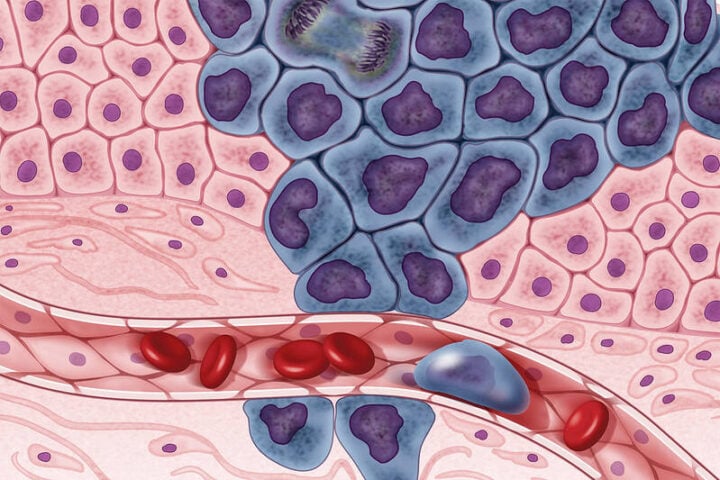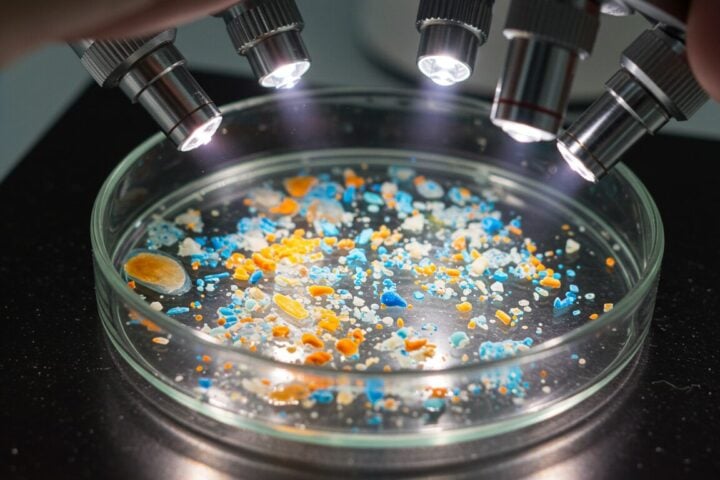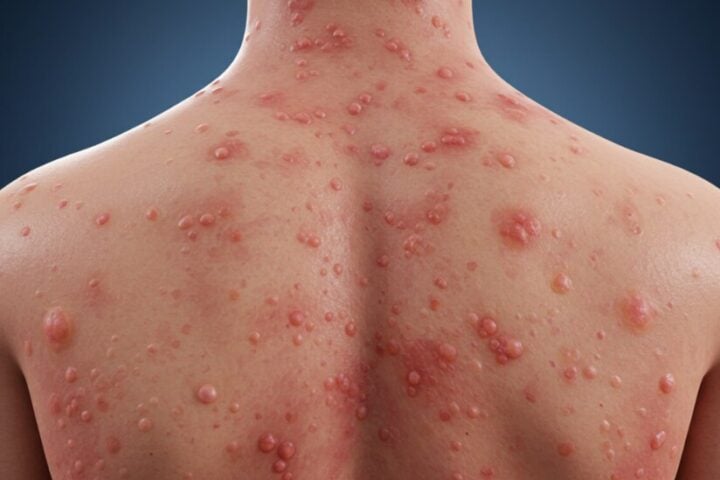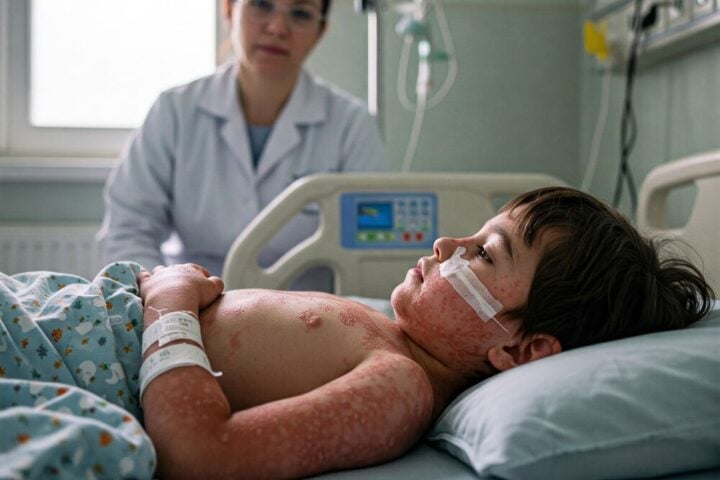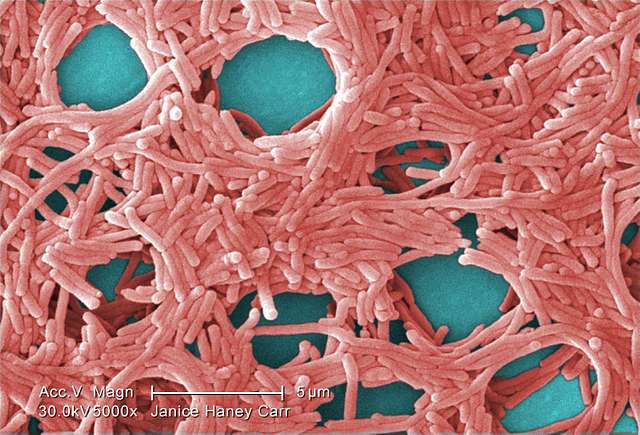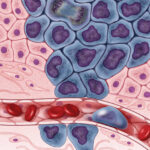Herbicide Chemical Linked To Cancer Found In 80% Of Us Urine Samples – A new report by the United States Centers for Disease Control and Prevention found herbicide glyphosate in 80% of the urine samples collected from kids and adults in the USA. The new data was a part of the National Health and Nutrition Examination Survey. Th numbers suggest almost a third of the glyphosate laced samples were young Americans under the age of 18
Glyphosate is an herbicide. It is applied to the leaves of plants to kill both broadleaf plants and grasses. It was first registered for use in the U.S. in 1974. It is one of the most widely used herbicides in the United States. People apply it in agriculture and forestry, on lawns and gardens, and for weeds in industrial areas. Some products containing glyphosate are used to control aquatic plants. There are over 750 products containing glyphosate for sale in the United States. Glyphosate is a non selective herbicide meaning it will kill most plants. Humans can be exposed to glyphosate via their skin, in their eyes or even by breathing.
Animal and human studies were estimated by regulatory agencies in the USA, Canada, Japan, Australia, and the European Union as well as the Joint Meeting on Pesticide Residues of the United Nations and World Health Organization (WHO). These agencies looked at cancer rates in humans and studies where laboratory animals were fed high doses of glyphosate. Based on their studies, they determined that glyphosate is not likely to be carcinogenic. However, a committee of scientists working for the International Agency for Research on Cancer of the WHO evaluated fewer studies and reported that glyphosate is probably carcinogenic. Long-term feeding studies in animals were assessed by the U.S. Environmental Protection Agency (EPA) and other regulatory authorities. Based on evaluations, they found there is no evidence that glyphosate is toxic to the nervous or immune systems. They also found it is not a developmental or reproductive toxin. The Food Quality Protection Act, the EPA has determined that children are not more sensitive to glyphosate as compared to the general population.
Since 1974 in the US, over 1.6 billion kilograms of glyphosate active ingredient have been applied i.e. 19 % of estimated global use of glyphosate (8.6 billion kilograms). Globally, glyphosate use has risen almost 15-fold since so-called “Roundup Ready,” genetically engineered glyphosate-tolerant crops were introduced in 1996. Two-thirds of the total volume of glyphosate applied in the U.S. from 1974 to 2014 has been sprayed in just the last 10 years. The corresponding share globally is 72 %. In 2014, farmers sprayed enough glyphosate to apply ~1.0 kg/ha (0.8 pound/acre) on every hectare of U.S.-cultivated cropland and nearly 0.53 kg/ha (0.47 pounds/acre) on all cropland worldwide.
Glyphosate is the most commonly used herbicide in the world and is known to have a variety of health effects, including endocrine disruption and an elevated risk of several types of cancer. Blood DNA methylation has been shown to be associated with many other environmental exposures, but to EHP knowledge no studies to date have examined the association between blood DNA methylation and glyphosate exposure. They have conducted and epigenome-wide association study to identify DNA methylation loci associated with urinary glyphosate and its metabolite aminomethylphosphonic acid (AMPA) and develop blood DNA methylation indices to predict urinary glyphosate and AMPA levels. 329 postmenopausal women, white blood cell DNA methylation was measured using the Illumine Infinium MethylationEPIC BeadChip array. They identified 24 CpG sites whose methylation level was associated with urinary glyphosate concentration and two associated with AMPA. Glyphosate and AMPA exposure were associated with DNA methylation differences that cloud promote the development of cancer and other diseases. AMPA, but no glyphosate, was associated with greater epigenetic age acceleration.
There have been eight studies that reported urinary levels in 423 occupationally and para-occupationally exposed subjects; 14 studies reported glyphosate levels in various biofluids on 3298 subjects from the general population. Average urinary levels in occupationally exposed subjects varied from 0.26 to 73.5 ug/L; environmental exposure urinary levels ranged from 0.16 to 7.6 ug/L. Only two studies measured temporal trends in exposure, both of which show increasing proportions of individuals with detectable levels of glyphosate in their urine over time.
Thirty-one samples of breast milk were collected from some rural mothers and conducted for herbicides; glyphosate and pendimethalin analysis followed by their impact on infants. Three rural locations; Shobrakhite, Abo Homos and Abo El-Matamir in El-Behira governorate were selected for the study as well as an urban location in Alexandria as a reference. Glyphosate and pendimethalin exhibited ranges of concentrations; 3.25-27.91; below detection limit-8.91; below detection limit-10.11 ?g/ml and 1.44-21.62; 2.51-15.94; 1.88-24.02 ?g/ml for Shobrakhite, Abo Homos and Abo El-Matamir locations, respectively. High vegetables and cereal consumption by mothers showed higher herbicide-contaminated milk (r=0.273* and 0.24*) than others. On the other hand, herbicides were negatively associated with young and house wife individuals (r=-0.272* and -0.330*). Tolerable daily intakes for infants were addressed for rank of low, moderate and high exposure. Infants of Abo El-Matamir location exhibited the greatest value for pendimethalin, but groups from Shobrakhite location exhibited the greatest value for glyphosate. The present findings indicate that signs of adverse health effects of herbicides may be imposed on these infants and their families.
Report by Journal of Neuroinflammation that recent rise in glyphosate application to corn and soy crops correlated positively with increased death rate due to Alzheimer’s diseases and other neurodegenerative disorders. Glyphosate has been shown to cross the blood-brain barrier in vitro models but has not been verified in vivo. Reports have shown that glyphosate exposure increases pro-inflammatory cytokine in blood plasma, particularly TNFa. They examined whether glyphosate infiltrates the brain and elevated TNFa levels in 4-months-old C57BL/6j mice. Mice received either 125,250, or 500mg/kg/day of glyphosate or a vehicle via oral gavage for 14 days. Urine, plasma, and brain samples were collected on the final day of dosing for analysis via UPLC–MS and ELISAs. Primary cortical neurons were derived from amyloidogenic APP/PS1 pups to evaluate in vitro changes in Aβ40-42 burden and cytotoxicity. RNA sequencing was performed on C57BL/6J brain samples to determine changes in the transcriptome. Their analysis revealed that glyphosate infiltrated the brain in a dose-dependent manner and upregulated TNFα in both plasma and brain tissue post-exposure. Notably, glyphosate measures correlated positively with TNFα levels.
Glyphosate tolerant crop technology has been an enormous commercial success and at least initially simplified weed management in maize, soyabean, and cotton crop both in the U.S. and worldwide. The upward trend in glyphosate use has and will likely continue to contribute to incremental increases in environmental loadings and human exposures to glyphosate its major metabolite aminomethylphosphonic acid (AMPA). Human exposures from around the home and urban uses of glyphosate also warrant closer attention. Most end use products of glyphosate are sold for home and urban purposes. Developing countries contain relatively low concentrations of glyphosate, so the risk of experiencing an acutely toxic exposure is minimal. Reasonably accurate estimates of glyphosate residues and dietary exposures in areas lacking residue data can be made drawing on insights gained from risk assessments conducted in areas with accurate glyphosate use and residue data.




